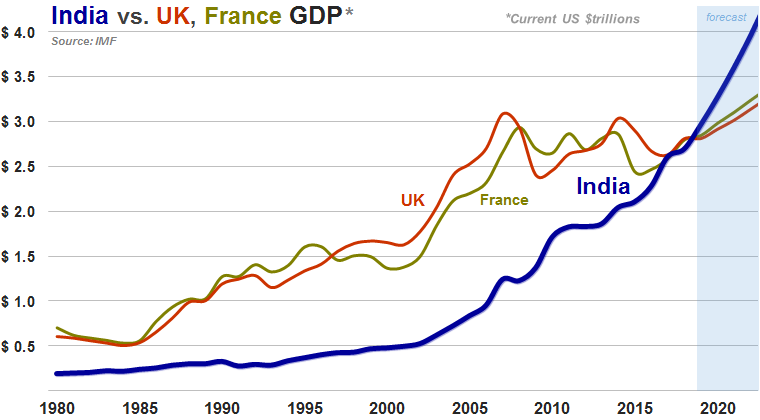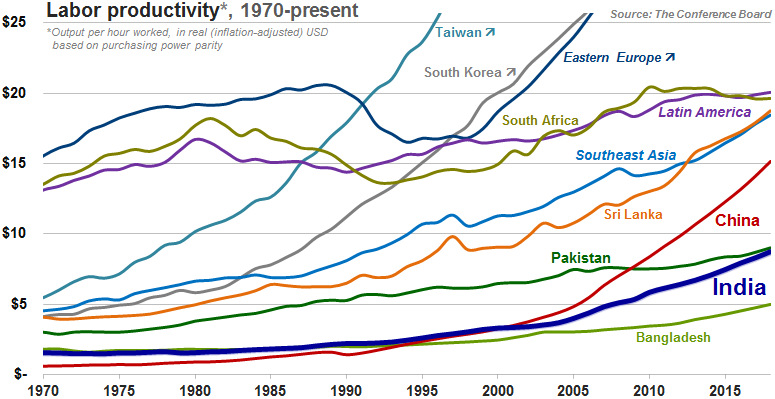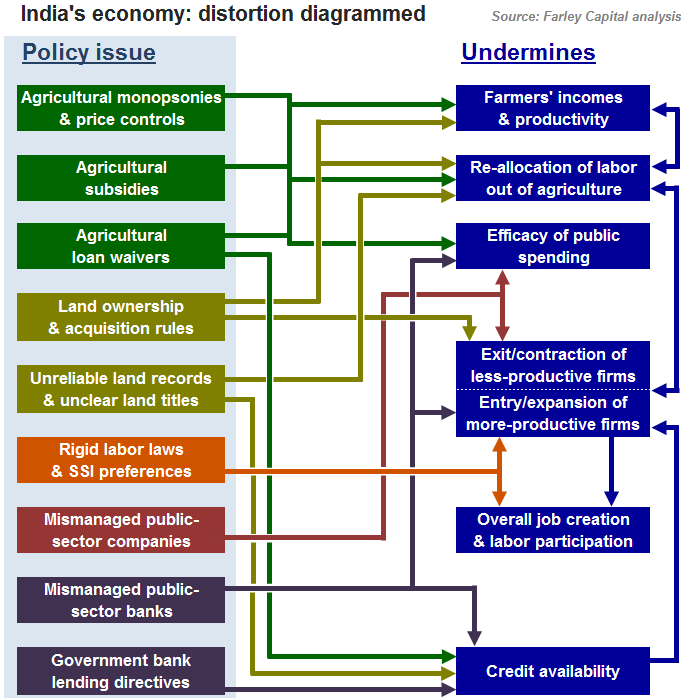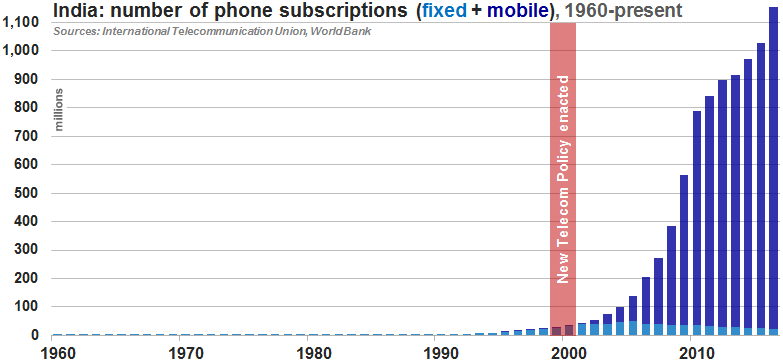|
These were some of this blogger's favorite India-related reads of the past year:
Honorable (serious) mentions: How one Indian city cracked the problem of urban spread; Establishing identity is a vital, risky and changing business (The Economist) Honorable (cheeky) mention: Ring the doorbell and run: How nuclear rivals India, Pakistan harass each other (Economic Times) As recently as 2014, India's GDP (measured in current, a.k.a. "nominal", dollars at market exchange rates) ranked tenth globally. Having overtaken Russia, Italy, and Brazil over the past four years, India is on track to eclipse both the United Kingdom and France in 2019 to become the world's fifth-largest economy in current dollars. On a purchasing power parity basis (i.e., adjusted for differences in the cost of goods and services), India's economy is already larger than those of Germany, the UK, and France combined. More to come on this topic in an upcoming dispatch.
India’s productivity growth has significantly lagged that of China over the past couple decades, in large part due to a web of interrelated legal restrictions, market distortions, and counter-productive incentives that have warped the Indian economy’s allocation of resources and stifled the potential of the country’s workers and businesses.
For more on this topic, check out the India's unfinished revolution dispatch. Because India’s agricultural sector, land market, labor laws, and state-owned companies form a Gordian knot of interconnected dysfunction, solving any of these areas’ problems requires reforming all the others, as well.
For more on this topic, check out the India's unfinished revolution dispatch.
Previous dispatches provided a chronology of the lead-up to India’s 1991 crisis (“India before 1991: tiger caged”), examined the reforms unleashed by that year’s events (“India since 1991: tiger uncaged”), and explored India's highly favorable demographics ("Demographics").
Since the liberalization of India's telecom sector around the turn of the millennium, the number of Indian phone subscriptions has multiplied more than forty-fold, to over 1.1 billion. As a result of intense competition between multiple private companies – which today account for over 90% of the market – Indian consumers now have access to the cheapest mobile phone plans in the world. More to come on this topic in an upcoming dispatch.
|
|||||||
|
|
© Farley Capital L.P. All Rights Reserved.
By using this website, you agree to our use of cookies, as explained in our privacy policy. |



